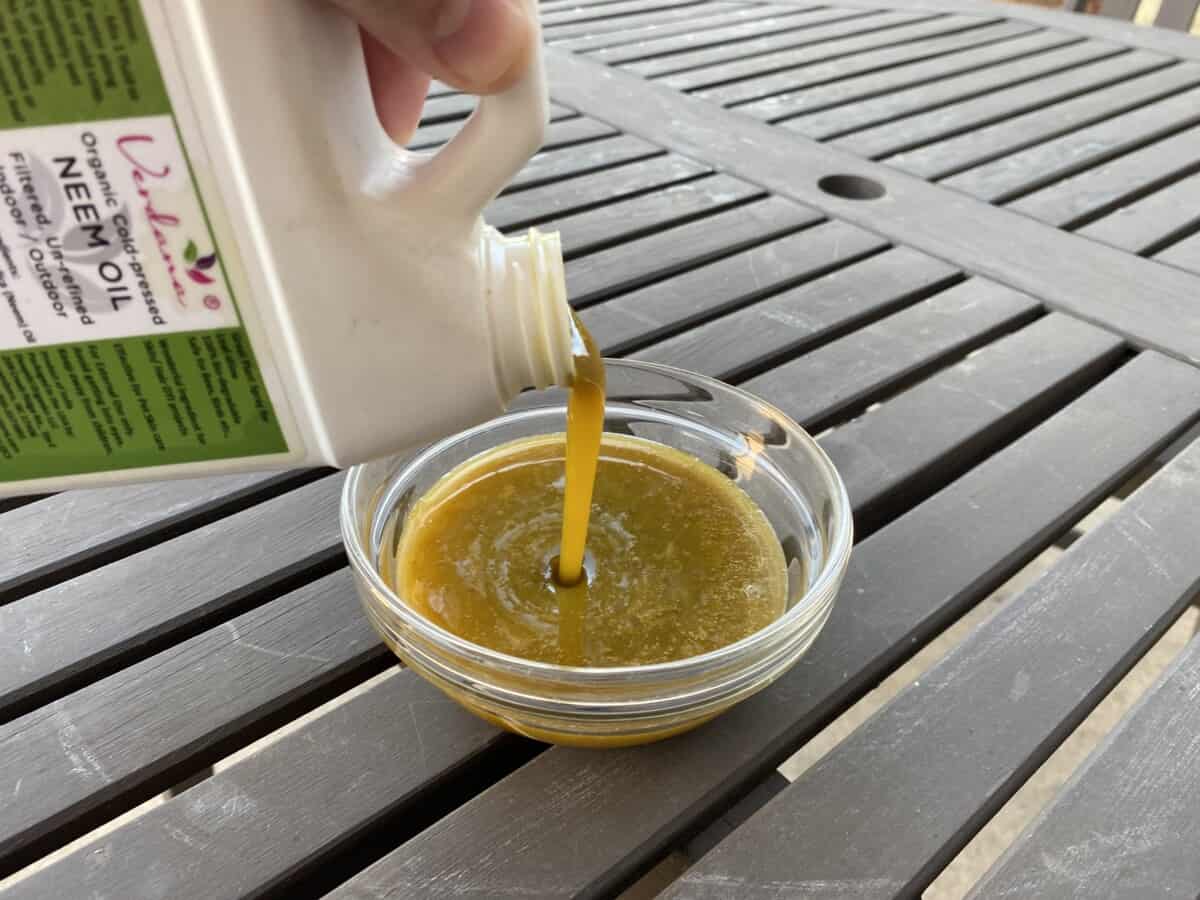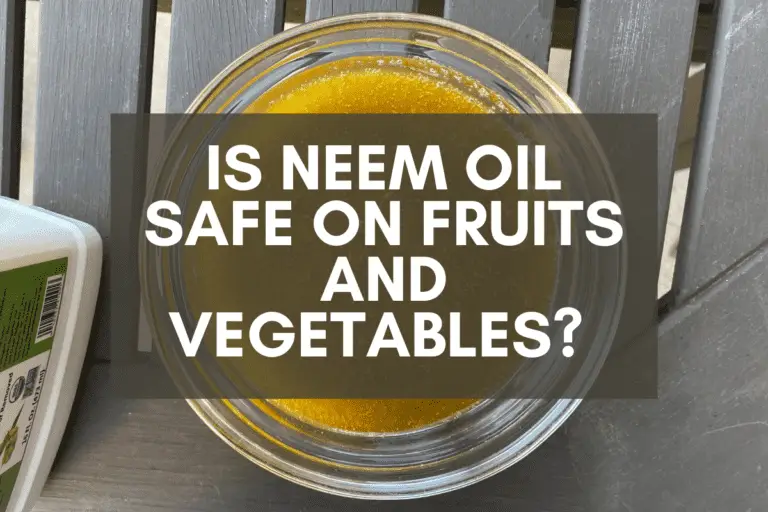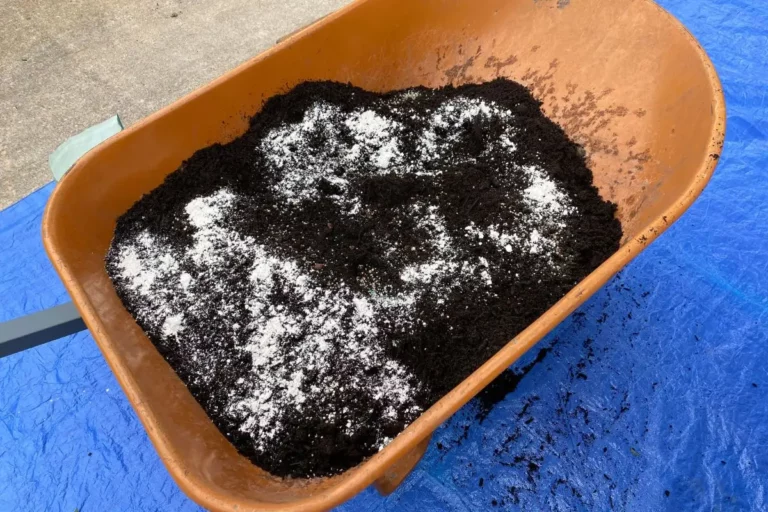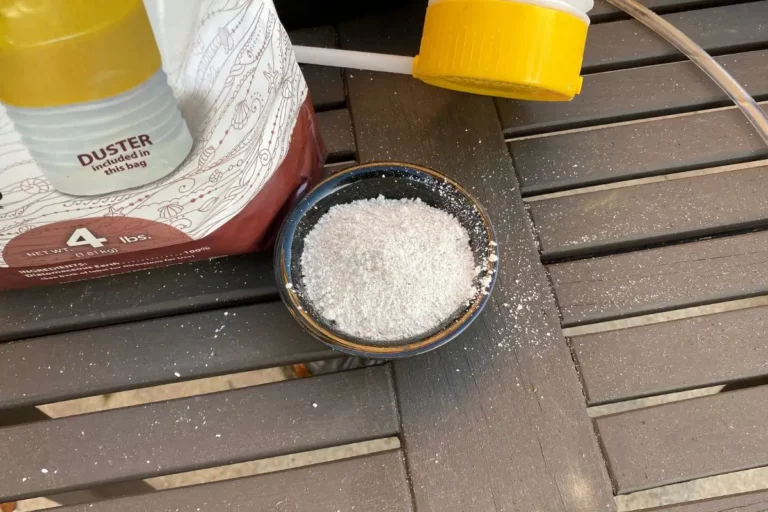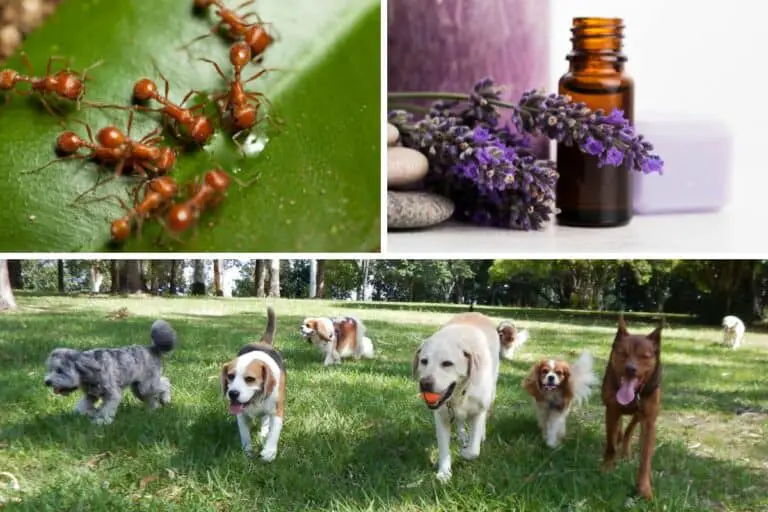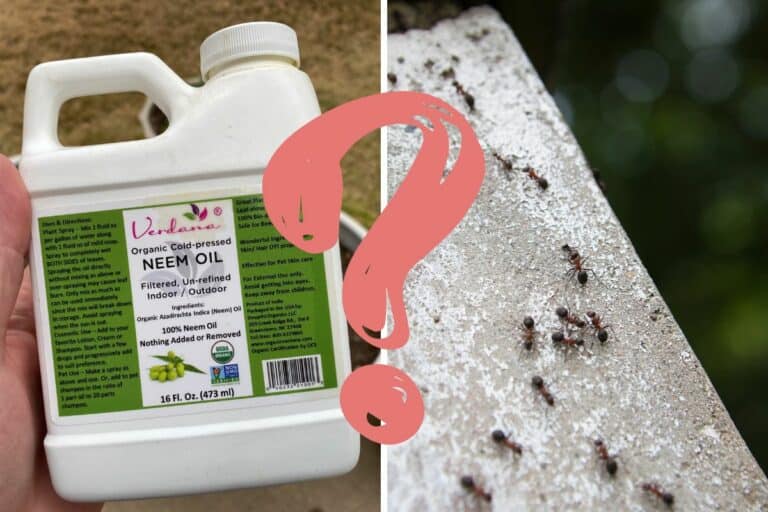Can You Use Too Much Neem Oil on Plants?
Neem oil is, hands down, my favorite organic insecticide. Derived from neem trees (Azadirachta indica), neem oil kills a wide variety of garden pests and yet breaks down quickly, causing no damage to plants if applied properly.
But what happens if it isn’t applied properly? Is it possible to use too much neem oil on plants?
If used too frequently, neem oil can harm plants by coating them in a thin layer of oil and thus choking their leafy pores, which are critical for photosynthesis, transpiration, and oxygen release. Neem oil can also cause foliage burns if applied during the wrong time of day.
I’ve used neem oil successfully for many years now, and what I’ve learned is this: To succeed with neem oil, you should pay close attention to both balance and timing.
Apply too little and too infrequently, and nothing much will happen. Whatever pest you’re fighting will likely continue to infest your plant, and you’ll soon see a decline in plant health, if not outright plant decay.
Apply too much and too often, and you’ll witness a decline in plant health as well, likely due to the interruption of the plant’s biological process or to burns caused when oil-coated foliage was exposed to direct sunlight and warmer daytime weather.
To avoid these problems, let’s take a closer look at what can happen if you apply too much neem oil and what you can do to ensure that your neem oil treatments harm pests, not plants.
Before we explore these in detail, I’d like to make sure we’re all on the same page by sharing my 3 favorite neem oil products with you:
- Verdana Organic Cold-Pressed Neem Oil
- Neem Bliss Pure Cold-Pressed Neem Oil
- Bonide Neem Oil Concentrate
As I’ve noted in an article on how long it takes for neem oil to kill bugs, I overwhelming prefer neem oil concentrates to pre-made neem oil sprays because, if you do an ounce-by-ounce comparison between the pre-made sprays and the diluted concentrates, the concentrates are literally 40 times less expensive than the popular pre-made products.
Now that you know what I used in my own garden, let’s take a look at what can happen if you spray too much neem oil on your plants or do so at the wrong time of day.
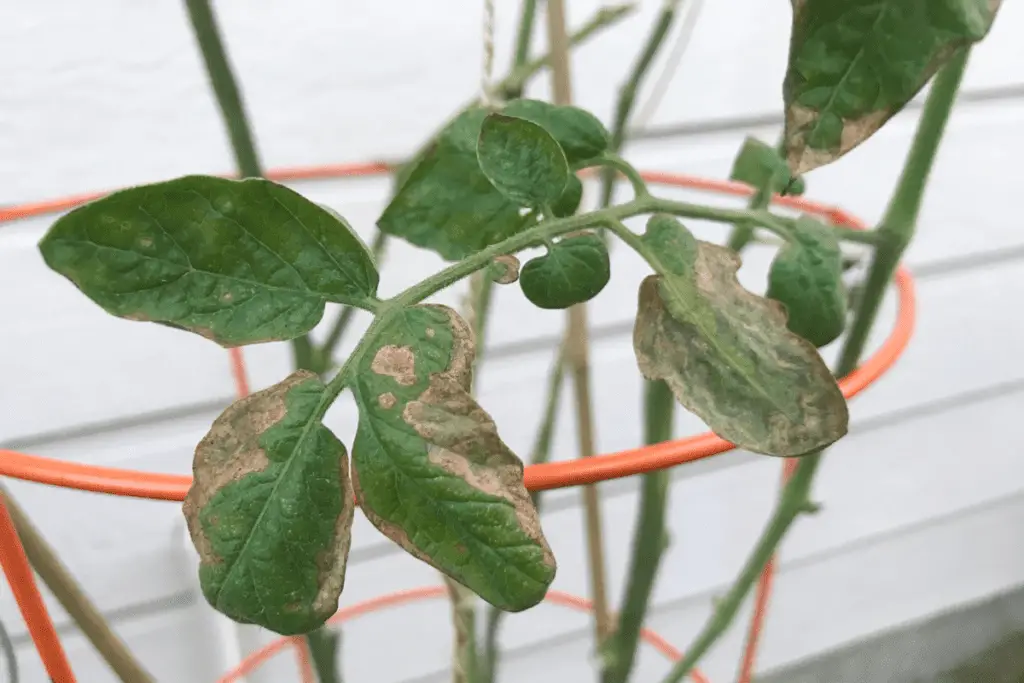
Can Too Much Neem Oil Damage Plants?
As researchers have shown, neem oil contains dozens of organic chemical compounds, but the most important one by far is azadirachtin.
This naturally-occurring compound doesn’t kill pests immediately, but once ingested, it’ll disrupt their ability to feed, molt, and reproduce and thus typically kill them off within a week’s time.
Neem oil also coats bugs in a thin layer of oil. Adult, hard-bodied bugs such as leaf-footed bugs, squash bugs, and stink bugs will be annoyed if you spray them with neem oil, but they won’t typically die. But smaller, soft-bodied pests such as aphids and spider mites are more susceptible to anything that coats them in an oily substance, especially if they’re in their nymph stage. If the oil itself doesn’t kill them, the azadirachtin will.
Thankfully, the oil won’t kill beneficial pollinators, and it’ll start breaking down quickly once it’s diluted, sprayed on plants, and exposed to sunlight and the elements.
There are certain steps you can take to make your neem oil as effective as possible, but in general, you shouldn’t apply neem oil more than once every 4-7 days.
In other words, if you’re applying neem oil every 1, 2, or 3 days, you’re using it too much, and you could do slow but lasting damage to your plants.
This is true for one simple reason: Neem oil will coat your plants’ foliage, branches, and flowers in a thin layer of oil.
As I noted above, this oily layer will start to break down within a few hours, but if you continue reapplying neem oil, without timing your applications correctly or spacing them out so that the oil breaks down fully in between, you could damage your plant in 2 major ways.
Foliage Burns
This is the most obvious way you can damage your plants with neem oil. Simply put, neem oil is an oil, and if it’s exposed to direct sunlight before it’s had time to fully dry, it will heat up, much like the oil in your frying pan heats up when subjected to higher temperatures.
Once neem oil heats up, it will likely damage whatever foliage it’s touching, causing burns that look like streaks, splotches, or even dots and eventual leaf decay. If you’ve covered too much of your plant in neem oil, you might kill the plant outright by causing damage to too much of its foliage.
The easiest way to avoid these problems is to always apply neem oil sprays in the early evening. I do so when the sun is setting, but it’s still bright enough to see clearly. This guarantees that the neem oil will have a full 10+ hours to dry before the sun rises again the next day.
I once missed an evening application and decided, against my better judgment, to apply the neem oil first thing the next morning. I thought I’d avoid any burning by doing so early, believing that it would dry before the sun could cause any damage.
You can probably guess what happened next: My plants got burned.
Thankfully, I had only applied a little neem oil on a few plants, so the plants recovered just fine. But the experience taught me a lesson: If you miss an early evening neem oil application, don’t try to squeeze one in the next morning. Simply wait until the next day at the appropriate time and spray your plants then.
In addition to the possibility of foliage burns, repeated neem oil applications can also have unintended side effects on 3 important biological processes that all plants undertake:
Photosynthesis
It’s common knowledge that photosynthesis occurs when plants transform carbon dioxide, sunlight, and water into oxygen and sugars, but what’s less well known is how exactly this occurs.
To put it simply, plants have epidermal pores called stomata (or stoma if you’re referring to a single pore). These microscopic openings play a key role in photosynthesis by pulling in carbon dioxide from the atmosphere. Each stoma is flanked by cells that function as gatekeepers. If the plant has enough carbon dioxide, the cells close the stoma to temporarily lessen or stop the flow; if the plant’s carbon dioxide levels are low, the cells open the stoma to allow more CO2 in.
Stomata are thus critical to photosynthesis. Although they don’t play a role in the actual chemical processes taking place inside the plant, they control how much and how often carbon dioxide flows into the plant, thereby regulating one of photosynthesis’ key components.
Transpiration
When stomata open to pull in carbon dioxide, they also release something during that process: water. And lots of it. As the U.S. Geological Survey notes, an acre of corn can transpire up to 4,000 gallons of water per year while a single large oak tree can transpire up to 40,000 gallons.
Transpiration varies depending on a wide range of factors–heat, humidity, wind speeds, and soil moisture, to name a few–but it’s an important part of the plant’s life cycle, and the stomata regulate when and how much each plant transpires at any given time.
Oxygen Release
When plants undertake photosynthesis, they gather carbon dioxide from the atmosphere and, using energy derived from sunlight, they combine CO2 plus water to create carbohydrates and oxygen. They then expel the excess oxygen as an unnecessary byproduct of the photosynthetic process.
Not surprisingly, these exchanges also take place through the plant’s stomatal openings, particularly during the daylight hours. The open stomata are thus doing double duty: They’re allowing CO2 in while simultaneously letting oxygen slip out.
As studies have shown, anything that disrupts these stomatal pathways will negatively impact plants, inhibiting their biological processes and stunting their growth.
And this leads to my fear when it comes to neem oil: If you spray neem oil too much and too frequently, you run the risk of coating and re-coating your plant’s foliage in oil, which could clog the stomata and thus hinder the plant’s ability to intake carbon dioxide and expel both water and oxygen.
How Much Neem Oil Should I Spray on My Plants?
If we’re talking about a single application of neem oil, I’d argue that it’s almost impossible to spray too much neem oil on your plants. Even if you continue spraying after fully coating the foliage in neem oil, the excess spray will simply drip off the plant. It won’t form a second layer.
When I had a terrible spider mite infestation among my tomato plants last year–which I’ve written about in detail in articles about what spider mites look like on plants, how they spread from plant to plant, and what it takes to help plants recover–I got very aggressive with neem oil, testing just how much and how often I could spray without further damaging my plants.
To stop the spider mites, I ended up spraying my plants with neem oil every 4 days, using a soapy water spray on every intervening day in an attempt to stop their destructive march across my garden.
Most recommendations I’ve seen suggested only spraying with neem oil every 7 days, so I was a bit concerned that I might be overdoing it.
But here’s what happened: My tomato plants did great. They not only survived the spider mite infestation. They lived on for months afterward, producing harvest after harvest.
I’ve outlined my neem oil spray recipe and the steps I take to apply and store neem oil in other articles on this site, but simply put, you’re going to want to spray your plants as thoroughly as possible whenever you see destructive pests in your garden.
First, be sure to harvest any veggies or fruit that are ready to be picked. Next, set your sprayer to the “cone” or “fan” settings and, starting from the uppermost plants, aim your sprayer at the undersides of all foliage and spray them until the plant is dripping with neem oil spray.
Once you’re sure you’ve sprayed the undersides of all foliage thoroughly, spray the topsides of the leaves, aiming from different angles to ensure that the spray hits all sides of the plant.
For smaller infestations, like the kind you’ll find in a typical backyard garden, you’ll only need to mix enough neem oil to fill a ½ gallon sprayer.
For larger infestations, you might consider using a 1-gallon or 2-gallon sprayer, but that’s a lot of neem oil spray, so you’ll only want to use this much if you’re planning to spray dozens of plants.
How Often Can You Use Neem Oil on Plants?
When it comes to insect infestations, how often you use neem oil largely depends on how advanced or extensive the bug damage is. I tend to think of infestations in terms of 4 distinct stages–since this helps me assess how aggressive to get with my pest control measures–but in general, here’s what I suggest:
For mild to moderate infestations, neem oil works best when it’s sprayed once every 7 days, with 1-2 soapy water sprays applied in the intervening days to ensure that bugs don’t manage to evade the neem oil treatment.
For extreme infestations–or when dealing with destructive bugs such as spider mites–I recommend a much more aggressive treatment method, which I’ve noted above and outlined in more detail in this article on killing spider mites with neem oil.
Long story short, in extreme situations, I apply neem oil once every 4 days, with soapy water sprays applied every day in between. I typically keep up this treatment method for 2-3 weeks to ensure that my plants are free of whatever pest was destroying them in the first place.
I noted above the various ways that you can hurt plants by applying neem oil too often. But from personal experience, I know that you can apply neem oil once every 4 days to a variety of plants without causing any problems.
I’d be hesitant to get this aggressive with herbs, lettuce, or other more fragile plant varieties, but for hardier plants, this approach has worked just fine for me.
How Do You Fix Neem Oil Burns?
I burned my plants with neem oil sprays a few times over the years, and I was horrified each time it happened. Thankfully, the solution was fairly simple.
Neem oil burns can’t be fixed, but if plants are healthy, they will continue growing despite burned foliage. Depending on the plant, damaged leaves and branches can often be removed to make room for new growth, and proper fertilization can help the plant recover quickly.
There’s no saving the burned parts of the plants, but you needn’t worry too much about neem oil burns as long as the burn area is relatively small and your plants are healthy.
After a recovery period, which could last anywhere from a few days to several weeks, healthy plants will keep growing and producing, especially if you provide an added boost with compost tea or organic fertilizers.
Should You Rinse Neem Oil Off Plants?
If you feel you’ve covered your plant in too much neem oil, you might be wondering whether you should attempt to rinse it off or not.
In general, I don’t recommend doing so. Neem oil will begin breaking down shortly after it’s been diluted and sprayed on plants. It’ll also dry completely within a few hours, which means that there’s no gains to be made by rinsing it off.
There’s one exception to this general rule: If you’ve accidentally applied neem oil during the morning or afternoon on a sunny day, I’d encourage you to spray your plants with water in the hopes of rinsing off as much neem oil as possible.
Once the sun rises and the day warms up, there’s a good chance that that neem oil could heat up and burn your plants.
Additional Reading
If you’d like to learn more about how to properly mix, apply, and store neem oil–as well as the steps I’ve taken to fight off common garden pests–I recommend reading these articles:
